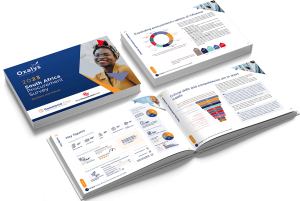“The sheer amount of transactions, the lack of data integrity, multiple ERP systems and additional manual processes result in up to half of the procurement activity happening in organisations being misunderstood or misrepresented, ” Proppie Fraser GM Supply Chain Management at CEC, a provider of analytical procurement tools, told Smart Procurement.
He said that in one major local organisation, spending billions per annum, more than 50% of the spend was not even visible to the Procurement Function from available data.
“Even in companies that are considered to be local leaders in Procurement, as much as 30% of the spend lies outside the purchasing system.
“In order to arrive at a full picture, companies need to analyse configuration data, master data and transactional data,” says Fraser
Master Data integrity a major culprit.
“Many firms currently use reports and other outputs provided by company-wide I.T. systems which may or may not suit procurement’s requirements. As a result, business decisions are made on unreliable, incomplete or even erroneous information,” he says.
“Especially invisible is the extent to which master data management is set up or designed, and how it is managed on a day-to-day basis.” “How do you know if the controls around these processes are valid?” he asks.
” Any weaknesses here may filter down through thousands of transactions.”
Operational Compliance becoming more important.
It is important for Procurement (and for Internal Audit) to determine “To what extent we are following our own rules? ” Compliance to internal procurement policy and process needs to be tracked as well as to government rules and regulations and BEE charters. especially in decentralized organisations or subsidiaries there may be considerable deviations from stated policy.
Remedial action needs to be taken to improve the level of adherence very quickly.
He mentions a few master data and transactional reports that organisations need to develop in order to track compliance appropriately:
Vendor Master Data _One-time vendors versus normal vendors
“Identify where the users may possibly be using “one-time” vendors to allow purchases from “normal” vendors, in excess of company allowed policies.”
Purchase order splitting
This report is used to identify where orders have potentially been split to avoid release strategies and procurement processes.
Duplicate Invoices:
Identify and display possible duplicate vendor invoices which will prevent invoices or credit memos from being entered more than once and, in the case of invoices, from being duplicated for payment.
Vendor orders parked and released by the same individual
“Identify where segregation of duties is not maintained when items are posted directly to accounts payable.
Contract Exceptions and Compliance
“Identify the number of contract exceptions, which are usually not allowed in any procurement best practice. These include:
• multiple contracts per item / vendor
• contracts with no usage
• information record update utilization
• contracts with no information record contract target values and quantities exceeded”
• off contract where a valid contract is in place but not being utilised.
Companies also need look at the status of their Contract Documents.
“They need to determine how many contract documents have been created in the past, how many are available for use at present and how many are closed. One needs to determine how many records have never been used. This means that these records were created without a purpose and, on investigating them, it may reveal incorrect practices which lead to creating useless Information Records.”
He told Smart Procurement that through CEC’s diagnostic tools, many large and medium sized organizations have gained real visibility into their day-to-day procurement for the first time through hundreds of reports across the entire procurement environment.
These reports analyse configuration and master data issues as well as spend and business processes.
“CEC’s business analysis tools can aggregate, reclassify and map huge amounts of data (literally millions of transactions), from any source, and evaluate the results in a very short space of time. Normally this process is can take weeks or months, be very disruptive and cost lots of consulting hours. Our advanced technology and pre-configured reporting suite speeds the process up dramatically” he says.
Proppie Fraser can be contacted at proppief@ce-commerce.biz


























